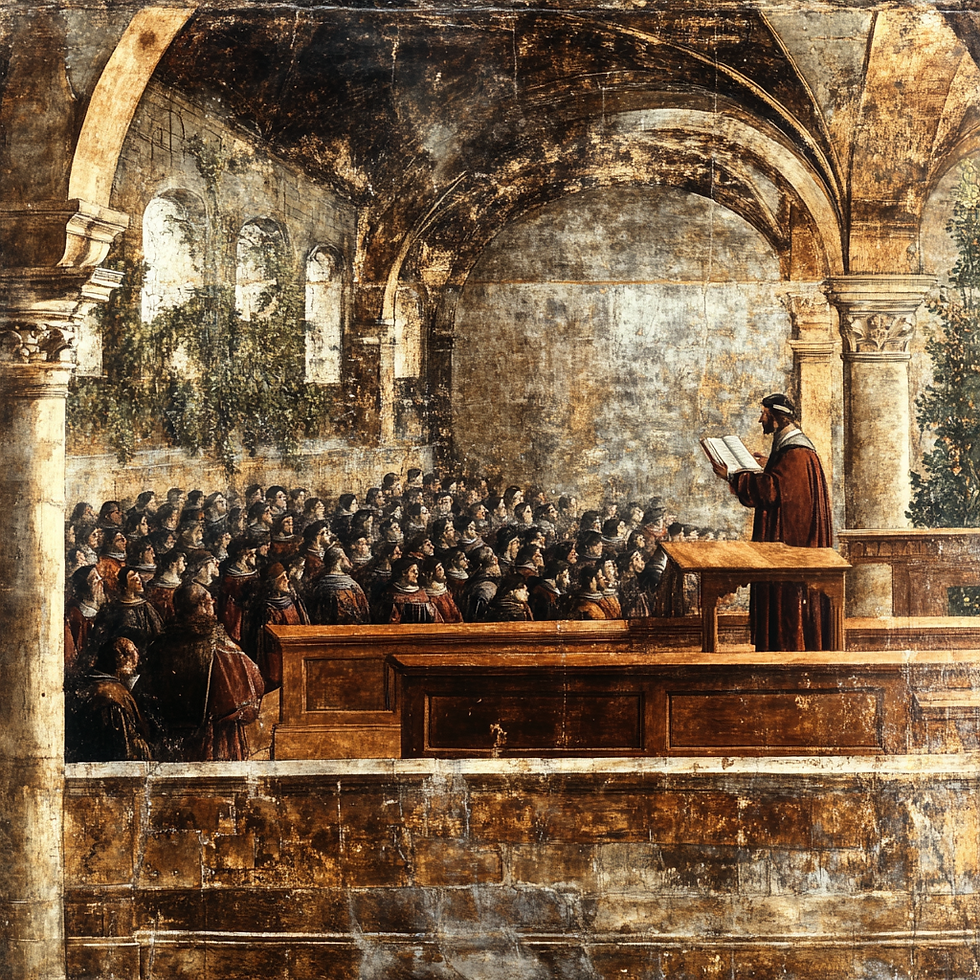The University of Padua: The Cradle of Reason in Medieval Italy
- Sidney Klock
- Mar 3
- 2 min read
In the corridors of Padua in 1284, the first debates of an institution that would defy time echoed: the University of Padua. Founded by dissident scholars from Bologna, the university emerged as a sanctuary of intellectual freedom, a haven for those who sought to question absolute truths and explore the limits of human knowledge. Amidst the turbulence of the Middle Ages, Padua became a center of learning where science, philosophy, and law intertwined in a mosaic of discoveries and transformations.

Over the centuries, the University of Padua established itself as a pillar of European intellectual Renaissance. Figures such as Galileo Galilei, who once taught there, helped shape modern thought, challenging religious dogmas and proposing new ways to understand the universe. Its law faculties became a reference across Europe, attracting students from various countries eager to learn from the most renowned masters of the time. In its classrooms, discussions went beyond canon and civil law to embrace the roots of medicine, astronomy, and natural philosophy.
Padua was not only a place of learning but also a laboratory of cultural and social experimentation. In the 17th century, it became one of the first universities to allow women, a groundbreaking decision for its time. Elena Cornaro Piscopia, the first woman to earn a doctorate, received her title there in 1678, defying the norms of her era. Additionally, its history of resisting external influences and defending academic freedom made it a symbol of the pursuit of truth and independent thought.
Today, the University of Padua remains a beacon of knowledge, pioneering research and upholding an unwavering commitment to science and education. Its legacy transcends centuries, influencing institutions worldwide and reminding us that knowledge, when cultivated with freedom and passion, has the power to transform entire societies. In an age of misinformation, Padua’s history teaches us that critical thinking and the pursuit of truth are always revolutionary.
Fun Fact
Did you know that the University of Padua houses the oldest anatomical theater in the world, still preserved? Built in 1594, it was designed as an amphitheater where medical students could witness human dissections, revolutionizing the study of anatomy!
References
Grendler, Paul F. The Universities of the Italian Renaissance. Johns Hopkins University Press, 2002.
Heilbron, John. Galileo. Oxford University Press, 2010.
Web source: University of Padua – www.unipd.it



Comments